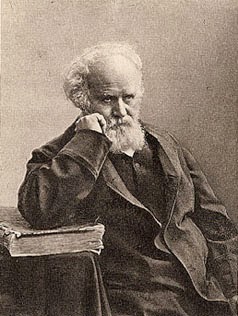Posted on August 18, 2014
 French astronomer Pierre Janssen traveled all the way to Guntur, India, to watch a solar eclipse on this date in 1868. Of course, Janssen didn't just watch the eclipse—he studied it—and he discovered some important things about the Sun.
French astronomer Pierre Janssen traveled all the way to Guntur, India, to watch a solar eclipse on this date in 1868. Of course, Janssen didn't just watch the eclipse—he studied it—and he discovered some important things about the Sun.It's wonderful that we CAN discover things about an object 93 million miles away!
What did Janssen discover? He observed bright lines in the spectrum of the outer atmosphere of the Sun – a layer called the chromosphere – that showed that it is gaseous.
 One of the lines was a very bright yellow line that was, it turned out, an indication of an element that had never been discovered.
One of the lines was a very bright yellow line that was, it turned out, an indication of an element that had never been discovered. The bright yellow line was helium – you know, the super-lightweight gas that we often use to fill balloons and blimps, so that they will float in the air.
Janssen noted that the chromospheric lines were so bright, they could be observed even without an eclipse. This paved the way for studying solar prominences without having to wait for—and travel to—a rare total solar eclipse.
By the way, Janssen's discovery of helium was made again just a few months later—separately, independently—by the English astronomer Joseph Norman Lockyer.
Because Lockyer went further, testing with a chemist to see exactly what element made the line, Lockyer was the one who got to name the new element, and today he shares credit for helium's discovery with Janssen.
Check out this spectacular example of a solar prominence! And here and here are more average solar prominences. (Note that each prominence dwarfs the Earth in size, as shown in this scale drawing, left.)
Also on this date:
Bad Poetry Day
Plan ahead:
Check out my Pinterest boards for:
And here are my Pinterest boards for:















